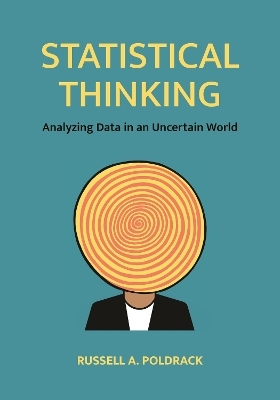
Statistical Thinking
Analyzing Data in an Uncertain World
Seiten
2023
Princeton University Press (Verlag)
978-0-691-25093-9 (ISBN)
Princeton University Press (Verlag)
978-0-691-25093-9 (ISBN)
An essential introduction to statistics for students of psychology and the social sciences
Statistical thinking is increasingly essential to understanding our complex world and making informed decisions based on uncertain data. This incisive undergraduate textbook introduces students to the main ideas of statistics in a way that focuses on deep comprehension rather than rote application or mathematical immersion. The presentation of statistical concepts is thoroughly modern, sharing cutting-edge ideas from the fields of machine learning and data science that help students effectively use statistical methods to ask questions about data. Statistical Thinking provides the tools to describe complex patterns that emerge from data and to make accurate predictions and decisions based on data.
Introduces statistics from a uniquely modern standpoint, helping students to use the basic ideas of statistics to analyze real data
Presents a model of statistics that ties together a broad range of statistical techniques that can be used to answer many different kinds of questions
Explains how to use statistics to generate reproducible findings and avoid common mistakes in statistical practice
Includes a wealth of examples using real-world data
Accompanied by computer code in R and in Python—freely available online—that enables students to see how each example is generated and to code their own analyses
Statistical thinking is increasingly essential to understanding our complex world and making informed decisions based on uncertain data. This incisive undergraduate textbook introduces students to the main ideas of statistics in a way that focuses on deep comprehension rather than rote application or mathematical immersion. The presentation of statistical concepts is thoroughly modern, sharing cutting-edge ideas from the fields of machine learning and data science that help students effectively use statistical methods to ask questions about data. Statistical Thinking provides the tools to describe complex patterns that emerge from data and to make accurate predictions and decisions based on data.
Introduces statistics from a uniquely modern standpoint, helping students to use the basic ideas of statistics to analyze real data
Presents a model of statistics that ties together a broad range of statistical techniques that can be used to answer many different kinds of questions
Explains how to use statistics to generate reproducible findings and avoid common mistakes in statistical practice
Includes a wealth of examples using real-world data
Accompanied by computer code in R and in Python—freely available online—that enables students to see how each example is generated and to code their own analyses
Russell A. Poldrack is the Albert Ray Lang Professor of Psychology at Stanford University, where he is director of the Stanford Center for Open and Reproducible Science. His books include Hard to Break: Why Our Brains Make Habits Stick and The New Mind Readers: What Neuroimaging Can and Cannot Reveal about Our Thoughts (both Princeton).
| Erscheinungsdatum | 23.09.2023 |
|---|---|
| Zusatzinfo | 116 b/w illus. 39 tables. |
| Verlagsort | New Jersey |
| Sprache | englisch |
| Maße | 178 x 254 mm |
| Themenwelt | Geisteswissenschaften ► Psychologie |
| Mathematik / Informatik ► Mathematik ► Statistik | |
| ISBN-10 | 0-691-25093-6 / 0691250936 |
| ISBN-13 | 978-0-691-25093-9 / 9780691250939 |
| Zustand | Neuware |
| Haben Sie eine Frage zum Produkt? |
Mehr entdecken
aus dem Bereich
aus dem Bereich
Eine Einführung für Wirtschafts- und Sozialwissenschaftler
Buch | Softcover (2022)
De Gruyter Oldenbourg (Verlag)
29,95 €


